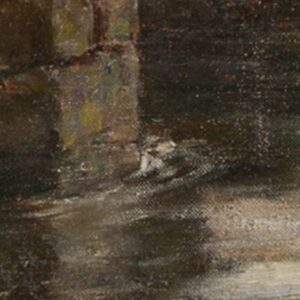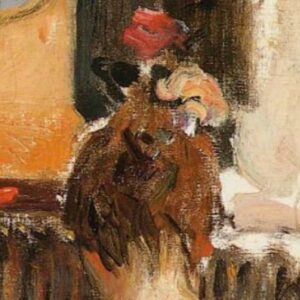Third Monogram?
Unlocking Alfred Sisley’s Monogram
Digital photography enabled sections of 'The Footbridge’ painting to be enlarged and studied. In the area around the stone pier, it became obvious the monogram was fused into the flow of water. The design and audacious location were unlocked. A brief search for another example, found 'The Lesson’ monogram.
Design Structure
Key to the design is the positioning of the 'dot’ which joins the initials.
The capital 'A’ and the 'dot’ are optically separated from the 'S’ as part of the camouflaging technique.
The capital 'A’ is an integral part of the design of the monogram:
’Early Snow at Louveciennes’ ©1871 is the last known work showing the capital 'A’ as part of the normal signature.
Sisley retains the capital 'A’ for 'The Lesson’ monogram ©1874.
In private letters, Sisley signs with a lower case 'a’.
Central Location
Eventually, Sisley wanted his monogram to be 'audacious’.
Challenging himself as an artist to pull it off and in private viewing, testing if it is seen (1).
Private and Exclusive
Provenance of 'The Lesson’ painting confirms Sisley kept the painting all his life and did not add the normal signature to this work.
It is reasonable to apply this provenance to 'The Footbridge’ painting.
Sisley’s monogram is a replacement for the normal signature, on works he intended to keep.
There is the real possibility of a 'Third Monogram’.
(1) Unobrusive monogram is interchangeable with audacious monogram.
Taking it’s place in the tradition of optical illusion in Art history.
Examples:
Arnolfini Protrait by Jan van Eyck’s (dated 1434): artist visible in the convex mirrow
The Ambassadors by Hans Holbein (dated 1533): anamorphic skull
Swans Reflecting Elephants by Salvador Dali (1937): Double image reflected in the lake



